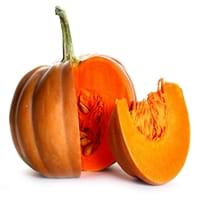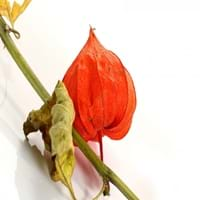Health Benefits
Arthritis treatment, Cancer prevention, High Cholesterol Regulation, Lower blood pressure, Helps Prevent cataract, Prevents gall stones, Ulcer treatment, Weight loss properties
Anti-oxidant properties, Anti-inflammatory properties, Cancer prevention, Maintains healthy cholesterol level, Reduces blood circulation problems, Treatment of cough, fever & sore throat, Treatment of Hypertension
General Benefits
Boosts respiratory health, Eliminate parasites and infections, Protects against birth defects, Strengthens bones
Treatment of asthma, Treatment of cataract, Treatment of hepatitis, Treatment of macular degeneration, Treatment of neurodegenerative diseases
Skin Benefits
Heals sunburn, Hydrates skin, Skin rejuvenation
Treatment of Rheumatism & Dermatitis, Treatment of Skin Inflammation
Hair Benefits
Regulates hair growth
Unknown
Allergy Symptoms
Abdominal cramps, Anaphylaxis, Digestive Problems, Dizziness, Eczema, Fainting, Hives, Inflammation, Itching, Tingling sensation in wrist and face, Vomiting, Wheezing
NA
Side Effects
Kidney and gallbladder diseases
Hypertension, Ventricular Tachycardia
Best Time to Eat
Along with meal, Don't eat after meal, Morning time (before lunch)
As a snack in the late afternoon, Eat the fresh ones, avoid mixing with any other foods, don't eat after meal., Morning time (before lunch), Strictly avoid empty stomach
Vitamin B5 (Pantothenic Acid)
Not Available
Vitamin B6 (Pyridoxin)
Not Available
Vitamin B9 (Folic acid)
Not Available
Vitamin C (Ascorbic Acid)
Vitamin K (Phyllochinone)
Not Available
Lutein+Zeaxanthin
Not Available
Phytosterol
Not Available
Water Content
Not Available
Calories in Fresh Fruit with Peel
Calories in Fresh Fruit without Peel
Not Available
Calories in Frozen Form
Not Available
Not Available
Calories in Dried Form
Not Available
Not Available
Calories in Canned Form
Not Available
Type
Berry
Fruit vegetable
Season
All seasons
Spring, Summer
Varieties
Jarrahdale, Peanut, Lakota, Cow, Sugar, Caribean, Red kuri, Buttercup and Pink lady
Physalis franchetii, Physalis pruinosa, Physalis peruviana, Physalis heterophylla and Physalis philadelphica
Color
Blue, Green, Orange, Red, White
Bright Yellow, Orange
Inside Color
Creamy Yellow
Orange
Taste
Creamy, Soft, Sweet
NA
Origin
Mexico
Chile, Peru
Soil Type
Clay loam, Sandy loam, Well-drained
NA
Climatic Conditions
Warm to hot climate
NA
Facts about
- The name pumpkin has its roots in the Greek word ‘pepon’, meaning ‘large melon’.
- The largest pumpkin ever grown weighed 1,140 pounds.
- Pumpkins were once known for removing freckles & curing snake bites.
NA
Other Countries
Egypt, India, Indonesia, Iran, Italy, Mexico, Russia, Spain, United States of America
NA
Top Importer
United States of America
Netherlands
Top Exporter
China
Colombia
Botanical Name
Cucurbita maxima
Physalis Peruviana
Synonym
Cucurbita pepo, Squash
Alkekengi, Herschellia & Pentaphitrum
Subkingdom
Tracheobionta
Tracheobionta
Division
Magnoliophyta
Magnoliophyta
Class
Magnoliopsida
Magnoliopsida
Subclass
Dillenhidae
Asteridae
Order
Cucurbitales
Solanales
Family
Cucurbitaceae
Solanaceae
Species
Cucurbita mixta
Physalis
Generic Group
Not Available
Not Available
Difference Between Pumpkin and Physalis
We might think that Pumpkin and Physalis are similar with respect to nutritional value and health benefits. But the nutrient content of both fruits is different. Pumpkin and Physalis Facts such as their taste, shape, color, and size are also distinct. The difference between Pumpkin and Physalis is explained here.
The amount of calories in 100 gm of fresh Pumpkin and Physalis with peel is 26.00 kcal and 77.00 kcal and the amount of calories without peel is 30.00 kcal and Not Available respectively. Thus, Pumpkin and Physalis belong to High Calorie Fruits and High Calorie Fruits category.These fruits might or might not differ with respect to their scientific classification. The order of Pumpkin and Physalis is Cucurbitales and Solanales respectively. Pumpkin belongs to Cucurbitaceae family and Physalis belongs to Solanaceae family. Pumpkin belongs to Cucurbita genus of Cucurbita mixta species and Physalis belongs to Physalis genus of Physalis species. Beings plants, both fruits belong to Plantae Kingdom.









